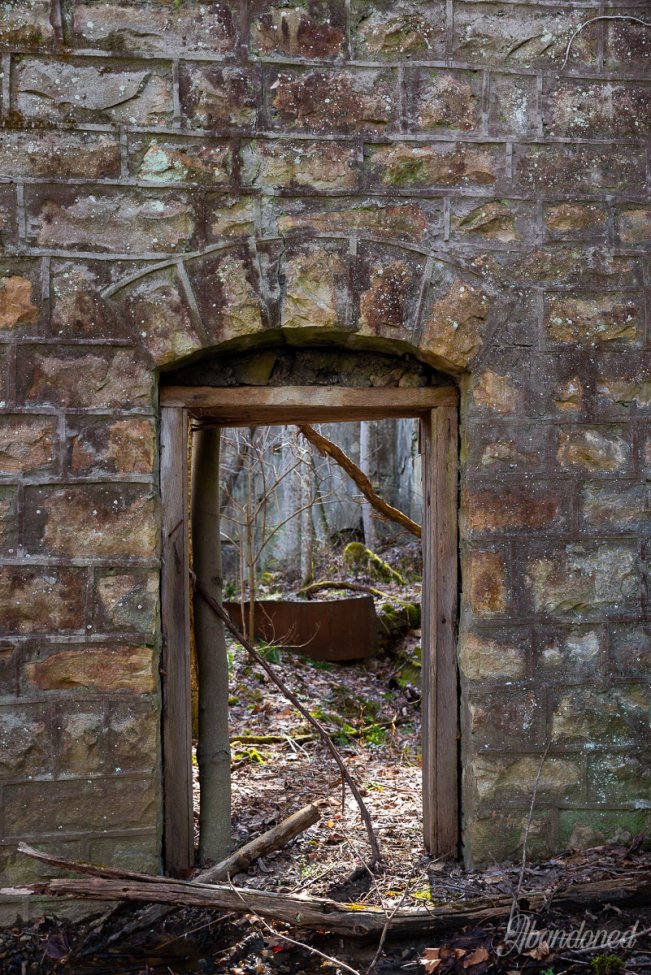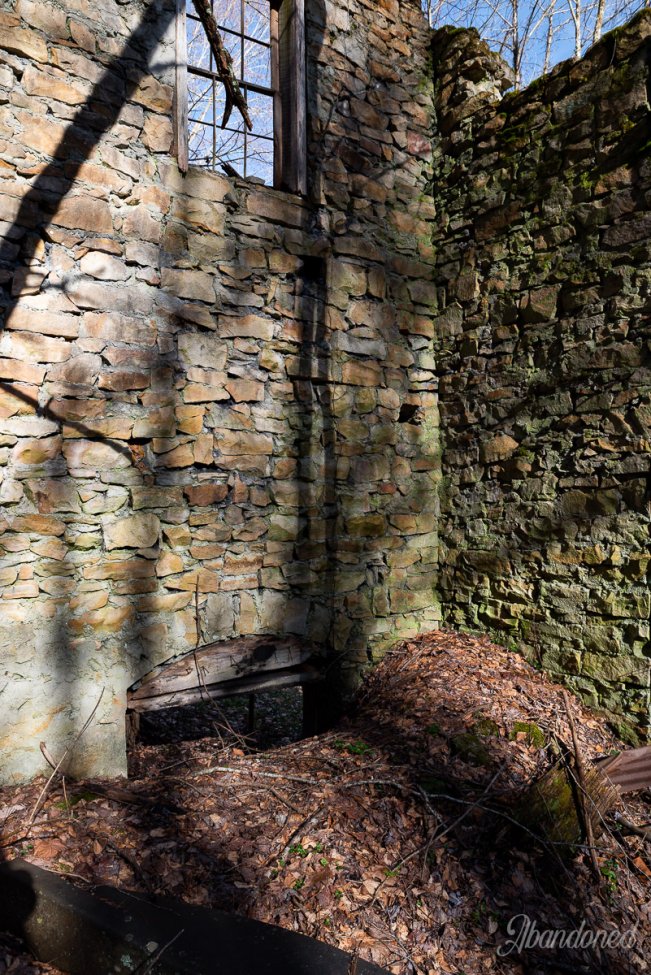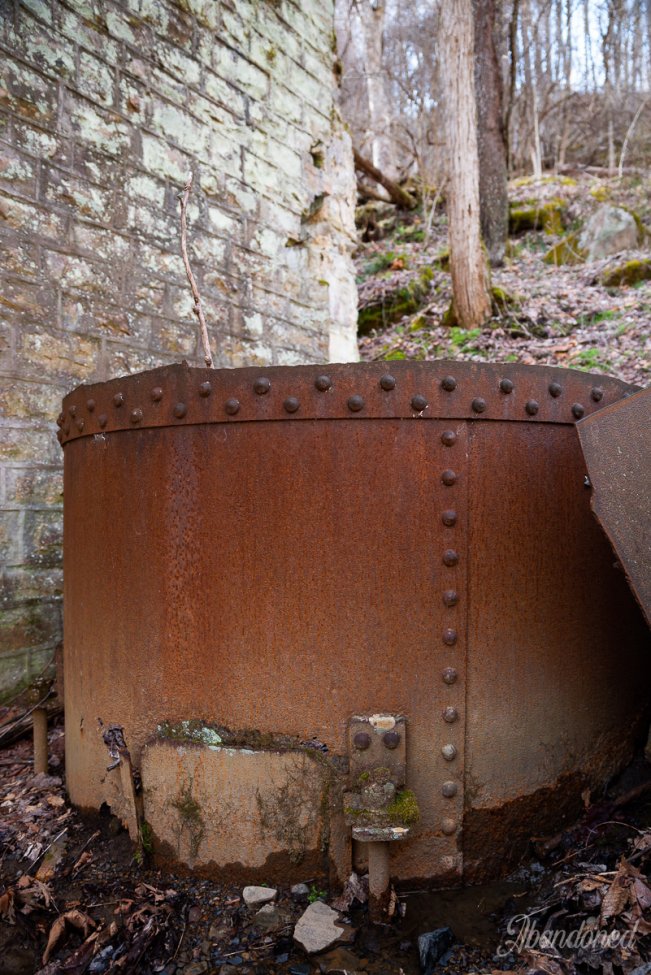Before industrialization took hold in West Virginia’s New River Gorge, the region was sparsely populated with settlers who relied on subsistence farming and limited trading. The construction of the Chesapeake & Ohio Railway along the New River in 1872 marked the beginning of a dramatic transformation, turning the valley into a pivotal coal mining hub globally. The extension of railways into adjacent valleys like Laurel and Piney Creeks made coal mining more feasible, igniting a coal mining boom.
In 1863, West Virginia’s coal production was a modest 444,648 short tons, primarily serving the nearby burgeoning salt industry near Charleston. A decade later, coinciding with the opening of the first coal mines in the New River valley, production nearly doubled to one million short tons. This figure surged to 2.3 million tons by 1883 and reached 10.7 million tons by 1893, culminating in a peak of nearly 156.6 million tons by 1924.
The rapid development of towns like Thurmond, Fayette, Kay Moor, Nuttallburg, Thayer, and mining operations along Laurel Creek, and the creation of a miners’ hospital at McKendreee, was a relatively brief episode.
The advent of mechanization in the 1890s began reducing the demand for manual labor in mines. Despite initial resistance from miners worried about job loss and operators reluctant to invest in costly machinery, mechanized mining eventually became the norm due to its efficiency and higher productivity. By the 1950s, machine mining had almost entirely replaced manual labor, significantly decreasing the workforce needed as machines could outperform several miners at once.
By this time, the once abundant underground coal reserves in the New River Gorge were nearly depleted. Although strip mining persisted into the 1980s, it employed far fewer people due to its mechanized nature. As a result, the area experienced a gradual decline in population due to the dwindling employment opportunities, altering the socioeconomic landscape of the region.
This account will be updated as further exploration of the New River Gorge continues.
Fayette and South Fayette
Fayette and South Fayette emerged as quintessential coal communities in West Virginia, thanks to the entrepreneurial spirit of local landowner Martin Blume. In an innovative agreement with the Chesapeake & Ohio Railway (C&O) during its construction through the New River Gorge, Blume allowed the railroad to traverse his land in exchange for perpetual free passenger rights for himself and his descendants. This deal facilitated the establishment of the Fayette Coal & Coke Company and the Fayette Mine, around which the community of Fayette developed. The mine operated under various managements from its inception until the 1960s, peaking in population at over 400 in 1910 but significantly dwindling by the 1950s. The railroad station, pivotal to the community’s connectivity, was reduced to a flag stop before its closure in 1963.
South Fayette, or Fayette Station, evolved shortly after the C&O’s decision to double-track through the New River Gorge to accommodate increased railway capacity. The construction of the second track on the opposite riverbank led to the development of South Fayette as a vital railroad depot, serving not only the local communities but also the county seat, Fayetteville. The two areas were initially connected by a ferry service, succeeded by the Fayette Station Bridge in 1889. However, the decline in mining activity in Fayette and the rise of automobile travel marked the end of an era, with the South Fayette railroad station closing its doors in June 1963. These developments encapsulate the transformative impact of industrialization and transportation evolution on small American communities.






Kay Moor
Kay Moor, West Virginia, stands as a historical marker in the coal mining landscape of the New River Gorge, tracing its origins back to 1873 when Abiel Abbot Low of the Low Moor Iron Company acquired land for potential coal operations. It wasn’t until 1899 that the Kay Moor No. 1 mine was developed 560 feet above the New River, designed to supply coal to the company’s blast furnaces in Virginia. This operation was notably connected to the C&O Railway at Kay Moor Bottom via a steep 1,000-foot incline, facilitating the daily transport of workers and equipment up and down the mountain. Initially utilizing mule-driven rail cars, the mine later transitioned to electric locomotives for efficiency. The mining process involved moving coal from the mine to a headhouse for weighing and processing, including a journey down a double-track incline to a plant for further treatment and sorting into various grades.
The establishment of the Kay Moor No. 2 mine in 1903, the construction of beehive coke ovens, and the development of residential areas for miners and their families underscore the significant expansion and industrial prowess of Kay Moor in the early 20th century. Despite technological advancements and the boom in coal production, particularly during World War II, the mines eventually faced exhaustion, leading to the abandonment of Kay Moor Bottom and New Camp by the early 1950s. The closure of the mines in the early 1960s, followed by a brief resurgence under the Barbara Gale Coal Company, marked the end of an era for Kay Moor. The site, now part of the New River Gorge National River and accessible as an interpretive display, serves as a poignant reminder of the region’s coal mining heritage and the environmental and social challenges that accompanied it.
Laurel Creek
Following the completion of the Chesapeake & Ohio Railway (C&O) mainline through the New River Gorge in 1873, the Low Moor Iron Company initiated the development of a 1½-mile branch line up Laurel Creek from Quinnimont to support its underground coal operations along the Fire Creek seam. This branch was subsequently extended by 4.8 miles to Brownwood in 1890, aiming to service the Greenwood Mines, marking the beginning of the branch line’s significance in the region’s coal production.
The Quinnimont Coal Company took over operations of this railroad under an agreement with the C&O on January 1, 1899, which was later nullified when the coal company resumed operations on June 30, 1902. Following further extension to Layland in 1904, the branch line, now totaling 6.3 miles in length, was fully incorporated into the C&O’s operations as the Laurel Creek Branch. This line saw significant coal mining activity, with nine mines operating along it by 1919. Although most of these mines were exhausted by the 1950s, coal mining persisted at Layland into the 1980s, illustrating the enduring impact of this branch line on the region’s coal industry.

































McKendree Hospital
In the late 19th century, the escalating number of accidents and fatalities among coal miners in West Virginia, largely due to unskilled labor and unsafe working conditions, underscored the dire need for medical facilities in the coal mining regions. Responding to this critical need, the state legislature established three miners’ hospitals in 1899 to provide hospital care for employees injured in the coal mines. Miners Hospital No. 2, later known as McKendree Hospital, was strategically located in McKendree along the Chesapeake & Ohio Railway on land donated by coal operator Joseph Beury. Opening its doors on December 30, 1901, the hospital was a three-story brick structure set on 6½ acres, featuring patient wards, administrative offices, a kitchen, and even a post office. Despite its ambitious beginning and the offering of free treatment to those injured on the job, the hospital faced numerous challenges, including water supply issues, the need for structural repairs, and the necessity of shipping contaminated linen to Charleston for sterilization.
By 1910, a nursing school was established to supplement the staff, eventually leading to the construction of a Nurses’ Home in 1917 due to the success and expansion of the program. Despite efforts to upgrade facilities, including installing a Delco lighting plant and repairing the heating and plumbing systems, the hospital struggled with overcrowding and wear and tear. The construction of private hospitals in nearby communities and the decline in mining activities led to a decrease in patient numbers, culminating in the closure of McKendree Hospital in 1941. The facility found a subsequent purpose as the West Virginia Home for Aged and Infirm Colored Men and Women until the Brown vs. Board of Education decision in 1956 mandated integration, leading to the relocation of its residents to the Huntington State Hospital.




Nuttallburg
Nuttallburg, nestled along Keeneys Creek and the New River in West Virginia, is a testament to the evolution and eventual decline of coal mining in the region. Founded by John Nuttall, an English immigrant who ventured into coal mining from a young age, Nuttallburg took shape in the 1870s following Nuttall’s acquisition of coal-rich land. The town thrived with the opening of its mines, notably the No. 1 mine in 1870 and the No. 2 mine in 1874, capitalizing on the completion of the Chesapeake & Ohio Railway to ship “smokeless” coal to eastern markets. The introduction of 80 coke ovens converted coal into high carbon coke, crucial for pig-iron blast furnaces, marking the town’s significance in the coal industry. By 1893, Nuttallburg had expanded to accommodate 300 residents, offering segregated but comprehensive community facilities including housing, schools, and recreational amenities.
The 1920s ushered in a transformative era for Nuttallburg, marked by Henry Ford’s vertical integration efforts through the Fordson Coal Company. Ford’s investment revitalized the town with the introduction of advanced mining machinery and the construction of a new tipple and conveyor system, significantly boosting coal production. Despite these advancements, Ford’s experiment with vertical integration faced challenges, leading to the sale of his interests in Nuttallburg in 1928. The town witnessed further changes in the mid-20th century, including additional worker housing and mining updates, before coal mining operations ceased in 1958. The National Park Service’s acquisition of Nuttallburg in 1998 and subsequent preservation efforts have ensured that it remains a well-preserved example of West Virginia’s coal mining heritage, now listed on the National Register of Historic Places and serving as a historical site within the New River Gorge National River.





































Thayer
Thayer, West Virginia, emerged in the early 20th century as a model coal camp settlement, developed by the Ephraim Creek Coal & Coke Company along with Ephraim. The establishment of the Buffalo and Slater mines in 1902 tapped into the Fire Creek coal seams, heralding the onset of industrial activity in the area with a combined production capacity reaching 1,000 tons of coal per day. Additionally, the region saw the development of the sand industry with the New River Silica Company in 1915 quarrying high-grade sandstone, and later, the Sun Sand Company furthering this industry, supplying various grades of sand to glass plants across West Virginia.
Thayer distinguished itself by providing exceptional living conditions to attract skilled labor, notably favoring white Americans or Russians. The town, named after industrialists Otis and William Thayer, boasted 250 houses with modern amenities such as indoor plumbing, bathrooms, and electric lights, a rarity in the rugged terrain of the New River Gorge. Amenities included a large company store, an amusement hall capable of converting into a dance floor, schools, and a range of recreational facilities. By 1916, the population reached 400 residents, reflecting the town’s rapid growth. However, the subsequent acquisition by the New River Coal Company in 1926 and the shift towards strip mining in the 1960s signaled the decline of Thayer, culminating in the closure of key community institutions by the late 1960s.





Thurmond
Thurmond, West Virginia, originated from humble beginnings when a post office was established in the area then known as Arbuckle in 1888. Incorporated in 1900 and named after Confederate Captain William Dabney Thurmond, who had moved to the area in 1844, the town was initially a solitary settlement with only one house built along the C&O Railway’s strategic line between Newport News, Virginia, and Huntington, West Virginia. The railway was completed through Thurmond in 1873, but it was not until Thomas G. McKell’s negotiations for a branch line up Dunloup Creek in 1892 that Thurmond began to flourish. By 1893, the completion of the C&O Loup Creek branch, serving 26 mines, transformed Thurmond into a vital hub of commerce and one of the busiest spurs in the New River region.
The early 20th century saw Thurmond’s ascendance as a center of local commerce, boasting facilities such as a passenger depot, freight station, and the notable Dunglen Hotel, further enhancing its boomtown status. Remarkably, during its peak, Thurmond managed more freight than Richmond, Virginia, and Cincinnati, Ohio, combined, making it a cornerstone of the C&O’s operations with significant freight revenue. However, the prosperity was short-lived as Prohibition, a devastating fire in 1922, and the Great Depression drastically affected the town’s economic landscape. Despite a brief revival during World War II, the shift from steam to diesel locomotives marked the decline of Thurmond’s railway significance. The town’s population dwindled over the years, but it found a new lease on life with the establishment of the New River Gorge National River and the subsequent recognition of Thurmond as a historical site, leading to efforts by the National Park Service to preserve and restore its historical significance for tourism and education.



















4 Comments
Add Yours →I love all the stories and history! Is it possible to explore any of these areas on our own?
It’s very much a tourist area, so yes.
My Father had his business in Thurmond before he moved it to Oak Hill. The H. E. Willson Engineering Company.
The New River Gorge museum says that much of the coal was used to fuel the great Cunard ocean liners. The museum is highly recommended, but I must say that the photographs here are simply superb–and spooky.